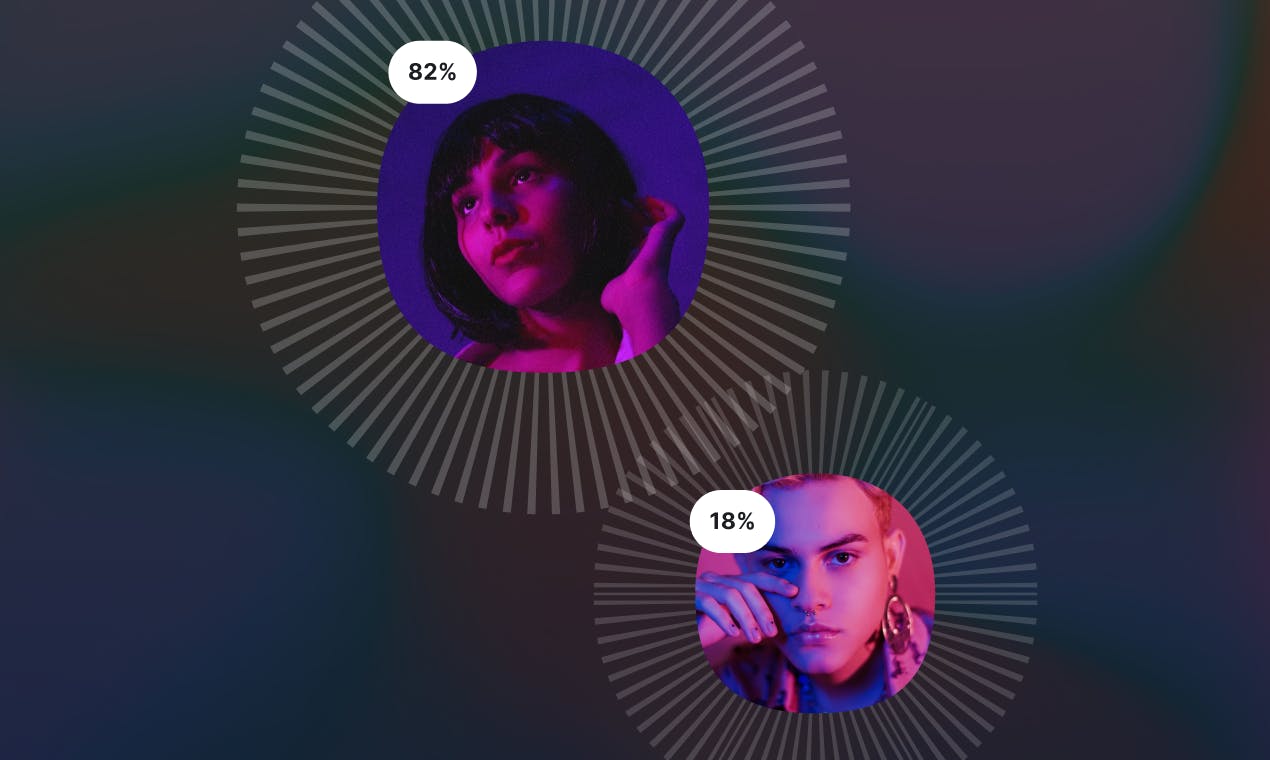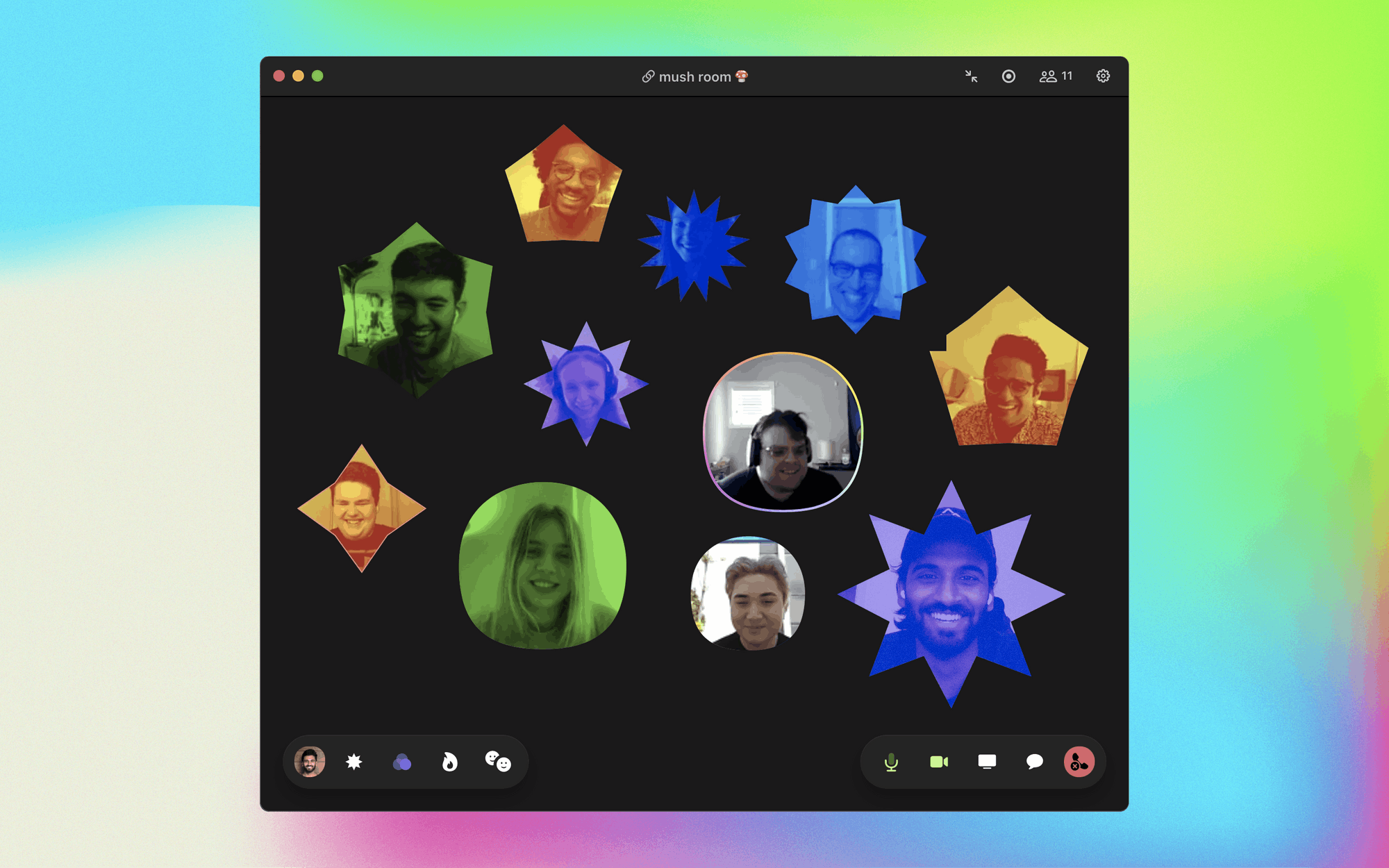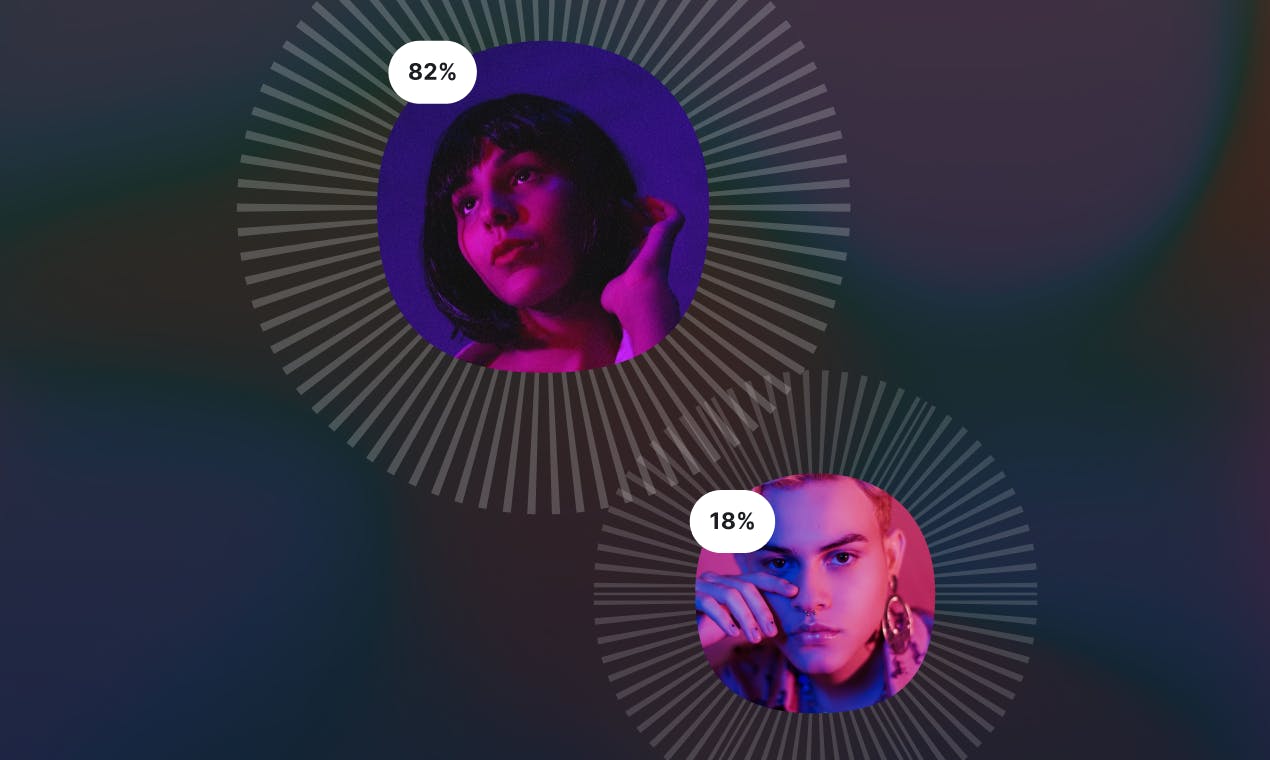Our bet on who wins the video space

The video space is booming, but today's tools don't prioritize personalization. At Macro, we've refined our opinion about how personalized video should look to create a client for expression.
We first launched Macro in July 2020 as a proof-of-concept for a custom Zoom client. Over the last year, we've refined our approach and are now re-emerging with a narrowed focus.
Macro makes meeting software a personal choice, with a Zoom client for customization and self-expression.
Why does that matter? Piglet from Winnie the Pooh may have said it best:
Macro makes meeting software a personal choice, with a Zoom client for customization and self-expression.
Why does that matter? Piglet from Winnie the Pooh may have said it best:
"The things that make me different are the things that make me, me."
We've come to rely on software more crucially than ever before, but the apps and tools that have become the foundation of our digital communication fail to recognize our individual differences.
What they're missing is the fact that software has become a form of self-expression. Personalized software – applications that adapt to who we are, instead of us adapting to them – is the future.
What they're missing is the fact that software has become a form of self-expression. Personalized software – applications that adapt to who we are, instead of us adapting to them – is the future.
Case Study: Email
Imagine a world where you needed the same email app to exchange emails with someone.
Luckily in email, there are universal protocols (SMTP/IMAP/POP3) that make it possible for all email clients who support those protocols to play nice and communicate with one another.
Email providers (Gmail, Yahoo, Hey, etc.) utilize them to provide a generic foundation that functionally gets the job done. An established protocol also paves the way for personalization, which usually first takes form as "opinionated software." This means startups (Superhuman, Newton, Spark) are able to build on top of existing service providers with their own opinions of what email could or should look like.
But what would adoption look like if a Superhuman user could only email someone else using Superhuman? The protocol makes the uptake of opinionated software a personal choice. It doesn't matter what the person you're emailing is using, you get to use the email client that best suits you.
Luckily in email, there are universal protocols (SMTP/IMAP/POP3) that make it possible for all email clients who support those protocols to play nice and communicate with one another.
Email providers (Gmail, Yahoo, Hey, etc.) utilize them to provide a generic foundation that functionally gets the job done. An established protocol also paves the way for personalization, which usually first takes form as "opinionated software." This means startups (Superhuman, Newton, Spark) are able to build on top of existing service providers with their own opinions of what email could or should look like.
But what would adoption look like if a Superhuman user could only email someone else using Superhuman? The protocol makes the uptake of opinionated software a personal choice. It doesn't matter what the person you're emailing is using, you get to use the email client that best suits you.
Case Study: Texting
Unlike email, there's no clear protocol winner in text messaging. It's an extremely fragmented space. iMessage, Whatsapp, Line, WeChat, Telegram, Signal, FB Messenger, and good ol' SMS.

It's tough to have personalization without common ground, but there's another way: consolidation.
Texts.com and Beeper are building a centralized source for all your texts. Rather than relying on each text platform adopting a common protocol, they've created an orchestration layer across the fragmented marketplace.
There's massive utility in consolidation alone but our hunch is an even bigger unlock comes when you allow each user to personalize their experience of receiving and sending messages across all their integrated apps.
There's massive utility in consolidation alone but our hunch is an even bigger unlock comes when you allow each user to personalize their experience of receiving and sending messages across all their integrated apps.
And now video
Video conferencing is a hot space right now. COVID-19 and WFH have rewritten the world as we know it, and video has emerged as the primary technology keeping us connected.
Zoom and Google Meet have solidified their place as incumbents, and a number of startups have emerged in the last year vying to take market share, most of which are build on VaaS (video-as-a-service) companies like Mux, TryDaily, Twilio, etc. Meanwhile, we're stuck without personalization, even though video is our most intimate form of communication. Zoom, Google Meet, and new startups in the space use generic interfaces regardless of how different each of us is.
Who's the protocol winner here?
We believe 3rd party video service providers and their clients, largely built on WebRTC, aren't likely contenders. Their businesses provide their own closed-loop ecosystem of video.
Zoom became the common denominator during the pandemic – software everyone had. Much of their success is attributed to the "it just works" factor. Zoom's core competency has been (and continues to be) its audio/video technology. Synchronous, low-latency audio/video is no simple feat. Zoom's massive tech lead is what led it to become the dominant app.
They didn't stop there. Zoom recognized that with its broad user base, it can't serve individuals or segments of the market personally, but it can enable others to do so with the Zoom Developer Ecosystem.
Zoom has crushed it as an app, on its way to becoming a platform, and we believe it will become the protocol winner in this space.
Zoom and Google Meet have solidified their place as incumbents, and a number of startups have emerged in the last year vying to take market share, most of which are build on VaaS (video-as-a-service) companies like Mux, TryDaily, Twilio, etc. Meanwhile, we're stuck without personalization, even though video is our most intimate form of communication. Zoom, Google Meet, and new startups in the space use generic interfaces regardless of how different each of us is.
Who's the protocol winner here?
We believe 3rd party video service providers and their clients, largely built on WebRTC, aren't likely contenders. Their businesses provide their own closed-loop ecosystem of video.
Zoom became the common denominator during the pandemic – software everyone had. Much of their success is attributed to the "it just works" factor. Zoom's core competency has been (and continues to be) its audio/video technology. Synchronous, low-latency audio/video is no simple feat. Zoom's massive tech lead is what led it to become the dominant app.
They didn't stop there. Zoom recognized that with its broad user base, it can't serve individuals or segments of the market personally, but it can enable others to do so with the Zoom Developer Ecosystem.
Zoom has crushed it as an app, on its way to becoming a platform, and we believe it will become the protocol winner in this space.
Building our opinionated software - a personalized Zoom
So, build on top of Zoom. Great. But what do we build? What form does an opinionated, personalized Zoom skin take?
Let's start with this: Zoom leaves a lot to be desired.
Zoom fatigue, a phrase relatively unheard of pre-covid, became a household term. This fatigue, studied by researchers and academics, wasn't caused by the lack of productivity in a meeting. In other words, adding live transcription and easy action items or notes wasn't going to make you feel better in a day of back-to-back Zooms.
Meetings just don't feel human. We're placed in an unnatural, rigid grid. The interface is clean but stark, devoid of any personality or culture. Whether you're meeting with friends, family, or close colleagues, conversations still feel awkward. The relationships and connections between you and the folks you're meeting with don't come through.
We've made meeting software a personal choice by betting big on Zoom. You can join any Zoom meeting with Macro even if everyone else is still on Zoom. We're elevating the most important part of your meetings, too: the humans.

With Macro, a Zoom client for expression, we're enabling people to showcase their authentic selves to the people they're meeting with - to "Bring Your Full Self."
Expression comes in many forms - we're starting with verbal and visual. Macro enables users to break the Zoom monotony with custom shapes and vibey filters that let you express yourself naturally in the moment. We're collaborating with the Macro Community and working with kickass artists to release drops like custom reaction packs, themes, and skins that can be added in-app.
Expression comes in many forms - we're starting with verbal and visual. Macro enables users to break the Zoom monotony with custom shapes and vibey filters that let you express yourself naturally in the moment. We're collaborating with the Macro Community and working with kickass artists to release drops like custom reaction packs, themes, and skins that can be added in-app.

When we looked at how a personalized Zoom might look for all types of people, we felt it was necessary to include features that weren't only "skin" deep. That's why with Airtime, you can be subtly aware of how much each person is contributing to the conversation. By self-regulating, you can be more inclusive of your teammates and others and help guide your conversations in a way that suits the group. Social profiles and public handles also add context about the humans you're meeting with right into the meeting.
With the dominance of Zoom and virtual connections, we're creating a future where Macro will eventually enable every person to create their own interface that reflects who they are. Our vision is to create a world as vibrant and unique as each of its members.
With the dominance of Zoom and virtual connections, we're creating a future where Macro will eventually enable every person to create their own interface that reflects who they are. Our vision is to create a world as vibrant and unique as each of its members.
Comments
💬
Be the first to commentMore stories

Aaron O'Leary · Announcements · 2 min read
Introducing Shoutouts

Finn Lobsien · Opinions · 5 min read
Can Devin AI Replace Product Managers?

Aaron O'Leary · News · 2 min read
Meet Nvidia's new localized AI chatbot

Sarah Wright · News · 2 min read
The top 15 AI products from 2023


